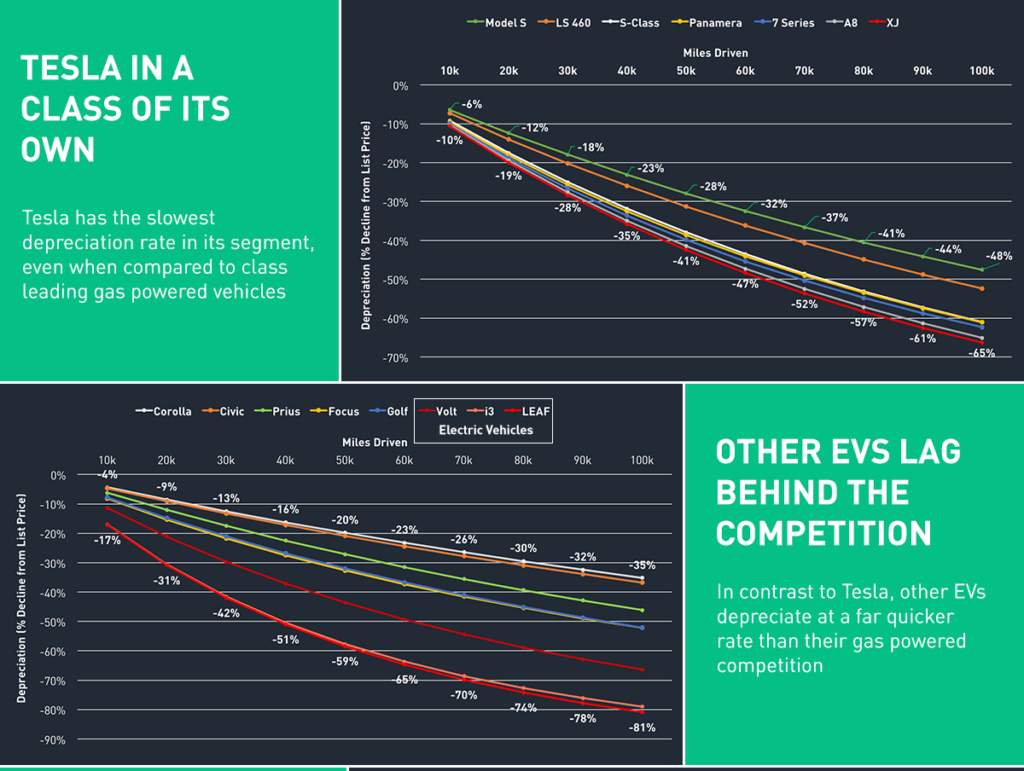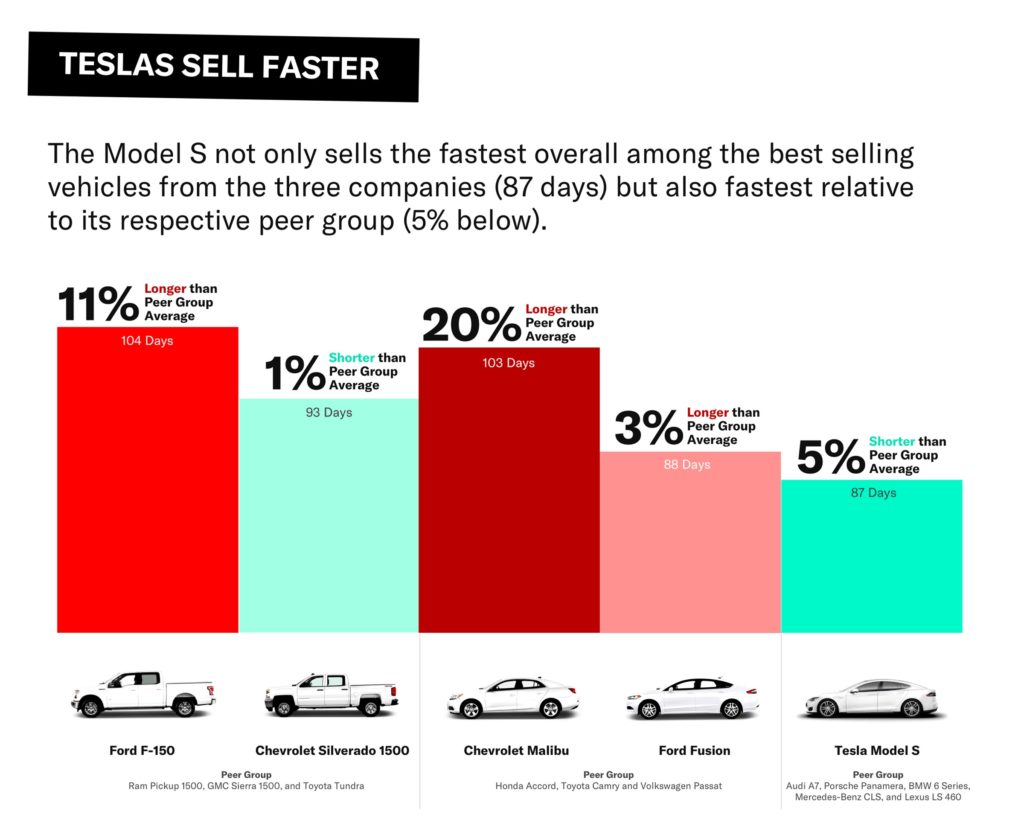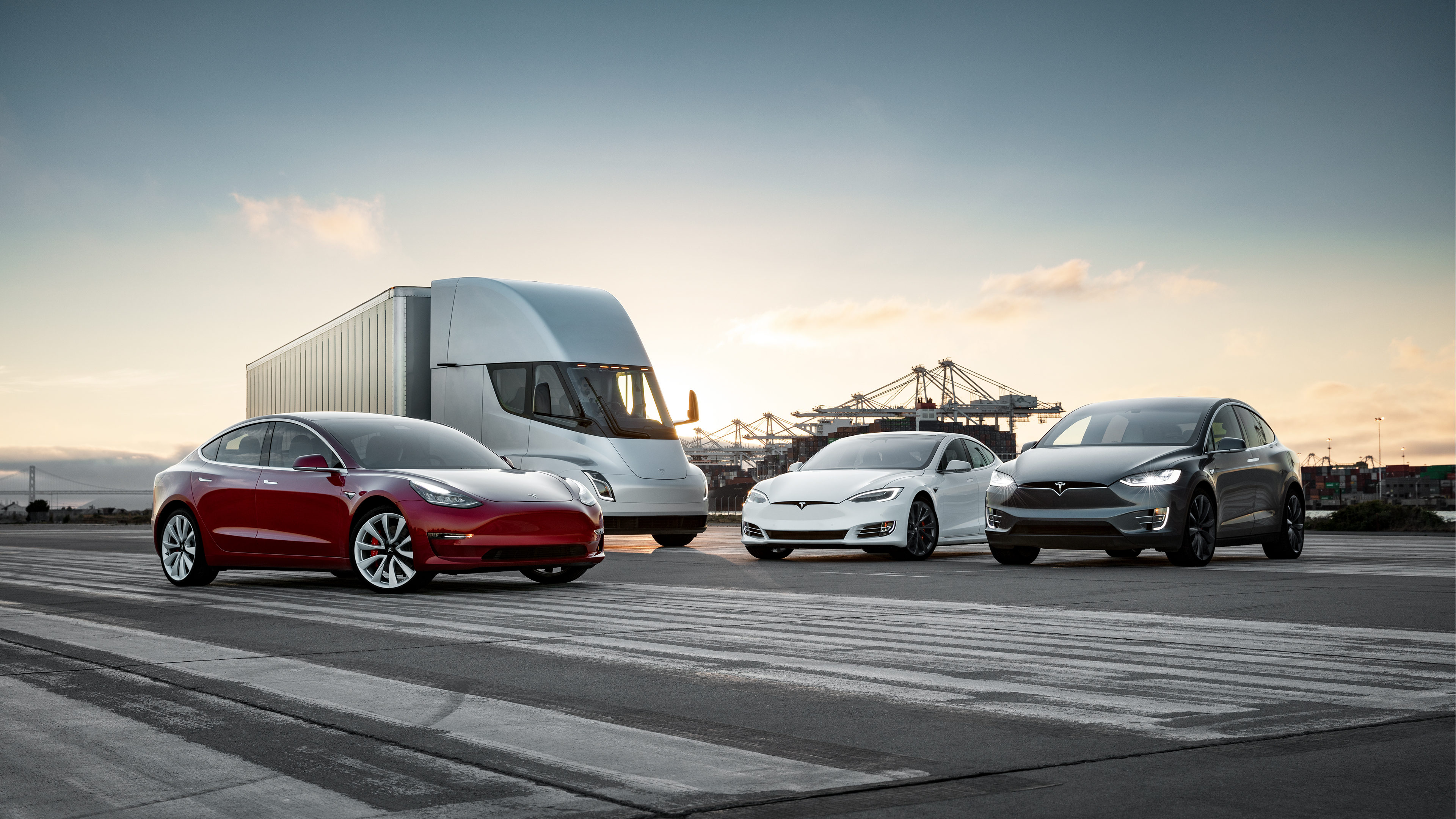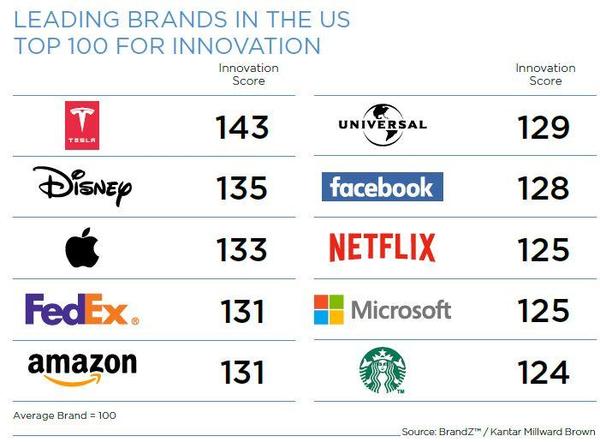Buying an electric vehicle is not a simple decision, it’s a huge leap. Nearly 80% of buyers surveyed by Autolist in 2017 expressed some concern about electric vehicles and less than two out of every 100 buyers opted for an electric vehicle in 2018.
There are many reasons why EV’s are still stuck in the early adoption stage and most electric vehicles lose their value faster than a comparable gasoline car.
AAA estimates electric vehicles lose $5,704 in value every year, compared to $3,172 for small cars, $3,301 for Hybrids and $3,799 for large sedans. Even Minivans had a better depreciation rate than electric vehicles at $3,839. The average annual depreciation rate was $3,172.
The AAA report was published in 2017 and things may have improved in the last twelve months, but the resale value of electric cars still have a long way to go before catching up with their gasoline counterparts.
According to Black Book, an auto-analytics firm, compact electric cars sold in 2014 are now worth only 23% of their original value, while their gasoline counterparts held on to 41% of their value. The higher rate of depreciation also explains why nearly 80% of electric cars in the United States are leased.
“U.S. drivers now lease almost 80 percent of battery electric vehicles and 55 percent of plug-in hybrids, according to Bloomberg New Energy Finance. The lease rate for the country’s entire fleet hovers around 30 percent.”
Why Electric Vehicles Depreciate Faster
The First Hit: Incentives
Countries all over the world have some form of tax credit or incentive to boost electric vehicle sales. But most incentives are aimed at new car buyers and not at future (used) car owners. New Electric Vehicles take a tax credit/incentive sized hit on their value as soon as they are driven out of the dealership.
China: “Depending upon range, China’s Central Government has paid subsidies from RMB 20,000 to RMB 44,000 ($3,000 to $6,600) per vehicle, and most local governments have added between 15% to 50% to that amount.”
United States: “The federal Internal Revenue Service (IRS) tax credit is for $2,500 to $7,500 per new EV purchased for use in the U.S”.
United Kingdom: “All cars bought from November 9, 2018 with sub-50g/km emissions and an electric range of at least 70 miles will only be eligible for a £3,500 grant — which is £1,000 down on the subsidy that’s currently offered”.
Germany: “A purchase grant, known as the environmental bonus, is paid towards new vehicles – €4,000 for non-hybrid electric cars, and €3,000 for plug-in hybrids. The grant is paid towards purchases of cars with a list price of up to €60,000”.
The Second Hit: Battery Degradation
The battery is the most expensive part of an electric car. So expensive that BMW’s board member Klaus Frölich predicts EVs will never become as cheap as their gasoline counterparts. He says, “In EVs with 90 to 100kWh battery packs, the cell cost alone will be $17,000 to $25,000. You can produce whole cars, only with the cost of the battery”
If the battery is the most expensive part, then the value of the car will be directly proportional to the value of the battery. Unfortunately, EVs built in the past didn’t inspire confidence due to concerns about range and life of battery packs installed in them.

“The battery in the Nissan LEAF has always been the cause of some concern, ever since some examples from the first few years of production seemed to suffer from premature degradation, leading to replacement,” says Domenick Yoney of Insideevs, “Since then, things have improved dramatically, though concerns and issues remain. ”
Lingering questions about long-term ownership cost of electric cars will continue to remain high if battery packs lose a good portion of their capacity within the first few years of usage. For a used car buyer, buying a car with 70% of battery capacity is a deal breaker as he will have no clear idea about how much capacity the car will lose in the next few years.
The harder the battery capacity falls overtime the harder it will be to sell the car in the used car market.
Third Hit: Fast Developing Tech
The global electric vehicle industry is on a fast track. Consulting firm Mckinsey expects global electric vehicle sales to increase from one million in 2017 to 4.5 million by 2020. As more and more automakers start building electric vehicles, the future looks bright for the industry but not so much for electric cars that are on the road today.
Why buy a used electric car today and be stuck with old technology while new technology advancements are coming in thick and fast. Two years ago, except Tesla, there weren’t any electric vehicles that offered more than 200 miles of range. Today there is a long list of them. Two years later there might be plenty of EVs with battery packs offering +300 miles per charge.
New electric car buyers prefer the leasing route over direct ownership because of the rate at which EV technology is developing. Owners want to keep things easy for an upgrade unless you are talking about Tesla.
Tesla, an anomaly in the Used Electric Car Market:
In the used car market, there is Tesla, then there are gasoline cars and right at the bottom of the pile, there is a stack of electric cars.

According to a detailed study done by Autolist, Tesla Model S lost 48% of its value after 100,000 miles, better than comparable gasoline cars that lost 50% to 65%.
“In contrast to Tesla, other EVs depreciate at a far quicker rate than their gas-powered competition.”- Autolist
Nissan Leaf and BMW i3 lost nearly 80% value after 100k miles, worse than the 35% decline experienced by Toyota Corolla and a 40% to 50% decline experienced by Prius. In the used car world, Tesla trumps gasoline cars and Gasoline cars trump other EVs.
Demand outplays Supply
Tesla’s demand versus supply equation helps boost the car’s value in the used market. Since 2012, Tesla has sold just 249,990 Model S worldwide. With Tesla having a production cap in place, the company might need another four years to double that number. Half a million used Model S is a small drop in the global used car ocean.
Model X will need many more years to reach 500k as the company has sold just 106,689 units since the third quarter of 2015. Tesla brand triggers the demand but there is just not enough cars in the used car market, that’s why Tesla moves out of the used car lot faster than other cars.
“The Model S not only sells the fastest overall among the best selling vehicles from the three companies (87 days) but also fastest relative to its respective peer group (5% below). ”

Battery Degradation
If the range and life of battery packs are top concerns for EV buyers then there is every reason to price Tesla vehicles a cut above the rest. Tesla battery packs are tested in the real world for the last ten years and its battery retains its capacity at a far superior rate.
Tesla batteries lose just 10 percent of their power after 160,000 miles, according to data collected by European Tesla owners group. Projections show that most Tesla vehicles will retain 90% capacity after 185,000 miles and 80% capacity after 500,000 miles.
In 2017, Ari Nyyssönen, a Finnish taxi driver, registered more than 400,000 kilometers in his 2014 Model S. According to Nyyssönen, his Model S retained nearly 93% of its original battery capacity.
There are plenty of Tesla Model S on the road today with more than 400,000 miles on the odometer and if their battery packs are still holding more than 80% range, it puts concerns about battery pack to rest.
Over the Air updates
Tesla uses over the air updates to upgrade its software and in some cases, the company has been able to improve the performance of the car as well. In 2018, after Consumer reports voiced its concern about Tesla Model 3s braking performance, Tesla reduced stopping distance by almost 20 feet through an over the air update.
Until now, that type of remote improvement to a car’s basic functionality had been unheard of. “I’ve been at CR for 19 years and tested more than 1,000 cars,” says Jake Fisher, director of auto testing at Consumer Reports, “and I’ve never seen a car that could improve its track performance with an over-the-air update.”
Though the hardware in old Tesla cars may limit some of the future upgrades, Tesla owners know that the company will upgrade the software, thereby the car whenever its possible.
“Get this question a lot, so need to clarify that there’s no such thing as a Tesla “refresh”. Other car companies do this every ~3 years, but Tesla constantly upgrades vehicle hardware every week”. – Elon Musk
Lou Steinberg, the founder of the technology studio and incubator CTM Insights, says he will never again “buy a car whose capabilities are frozen in time.” He adds, “Aside from navigation maps, all of my cars had features that were largely fixed on the day they left the factory.
Innovator Tag
In 2017, Tesla was ranked as the Most Innovative U.S. Brand by BrandZ, one of the largest global brand equity platform that covers over 100,000 brands across 45 countries.
The Brandz report states “Tesla is a premium electric-only car brand that creates a meaningful difference by, quite simply, being meaningful and different. Tesla has not only produced products that fulfill its customers’ desire for more environmentally conscious vehicles, it has invented an entirely new, direct-to-consumer sales model. It equips its cars with different driving modes and can update their firmware, just as you might upgrade the OS on a mobile phone. All this has built an enthusiastic, nearly rabid fan base that helps the brand grow.”
The top innovator tag assists Tesla’s image in the new car as well as the used car market. Helps the car hold its value better, because even if its a used car its still made by one of the leading innovators in the country. People quickly assume that it was the best tech available at the time and its worthy of their investment.
“Pace of innovation is all that matters in the long run.”
– Elon Musk
The Advantages of High Resale Value
- Boosts new car sales
- Higher resale value incentivizes car dealerships to look for models that retain their value.
- Easier to sell the car in the used car market compared to other cars.
- Reduces the long-term ownership cost.
- A robust used car market is attractive to body shops, mechanics and third-party service providers, making it easier to service and replace parts even for an old car.
- A car is a depreciating asset. If you have to choose between two assets of the same value and quality, you will always pick the one with slower depreciation.
Model 3s Challenge
Tesla Model 3 has been on sale for just over year. Though its way too early to pass a verdict on Tesla Model 3s performance in the used car market, the cheapest sedan from Tesla stable has plenty to prove.
Unlike the production limited Model S and Model X, Tesla has been on long Model 3 production surge.

The company has already sold more than 84,230 Model 3 and will quickly race to a million in the next year or two. Model 3 will not have the high demand low supply cushion Model S and Model X enjoy, so the car will be left to fall back on other factors to perform highly in the used car market.
It also helps that Model 3 comes with Tesla’s newly developed battery tech and the long-range battery offers a market-beating 310 miles range.
Conclusion
Tesla cars perform admirably in the used car market and that’s not going to change soon. Model 3s performance in the used car market will be watched closely but things should work in favor of Tesla due to the company’s superior battery technology.
Other electric manufacturers have plenty to prove before they can catch up with Tesla. The Chevrolet Bolt is off to a good start and despite production constraints, the all-electric vehicle from GM has demand far outstripping its supply. If Bolt’s battery retains capacity as drivers pile up the miles, it will automatically boost the value of the car in the used car market. It’s a massive challenge for electric car makers.
For now, Tesla will remain the used EV market benchmark.
If you like the article, please share it with your friends. Do share your thoughts in the comments section below.




